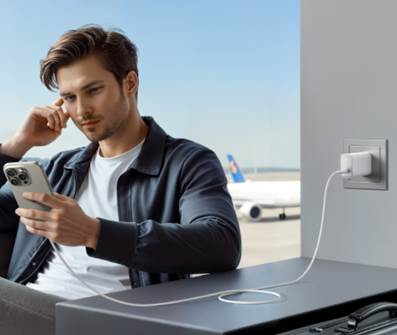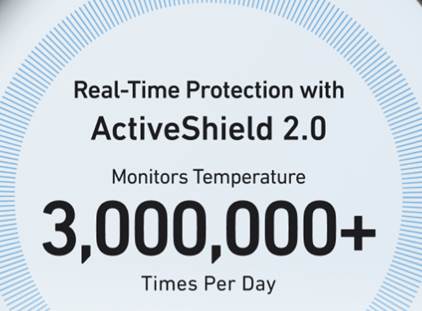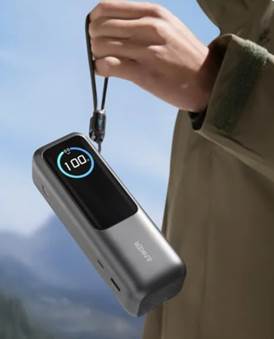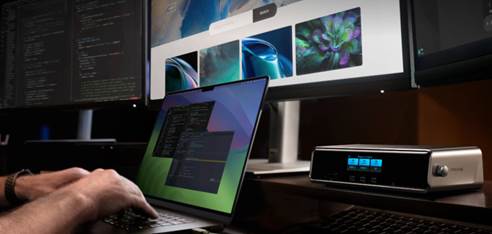An iPhone charger may
seem like a simple accessory, but choosing the wrong one can affect how quickly
your phone charges, how safe it is during use, and even the overall health of
your device’s battery. With so many options available, ranging from
Apple-certified Lightning cables to powerful USB-C chargers, it’s
important to understand which features actually matter. A reliable phone charger ensures not
only fast performance but also long-term safety and convenience. Here are some
key tips to keep in mind when selecting the best iPhone charger.

What to Look for in a Good iPhone Charger
The right iPhone charger
should balance speed, safety, and durability while matching your lifestyle
needs. Let’s break down the most important factors to consider.
Check for Fast-Charging Support
Apple’s newer iPhones
(from iPhone 8 onward) support fast charging with the right adapter and cable.
Look for phone chargers that provide at least 20W of power. For example, the
Anker Nano Charger (100W) can deliver more than enough speed for your iPhone 16
or iPhone 17 series, even supporting MacBooks, making it a future-proof choice. Pair it
with a USB-C to Lightning cable for fast iPhone charging, taking your device
from 0 to 50% in around 30 minutes.
Ensure MFi Certification
Apple’s “Made for
iPhone” (MFi) certification guarantees that a charger and cable meet Apple’s
strict performance and safety standards. Non-certified products may overheat,
charge slowly, or damage your device. Brands like Anker consistently offer
MFi-certified cables and chargers, giving you peace of mind that your iPhone is
charging safely without compromising performance.
Prioritize Safety Features
A high-quality iPhone charger
should protect against overheating, overcharging, and power surges. Anker’s
ActiveShield™ 2.0 technology, for instance, monitors temperature millions of
times per day and dynamically adjusts output for safety. This feature not only
protects your iPhone but also extends the lifespan of both the charger and your
battery, which low-cost, uncertified chargers can’t guarantee.

Choose the Right Port Type
Apple has begun
transitioning iPhones to USB-C, but many older models still rely on Lightning.
A good charger should match your phone’s port, and investing in versatile USB-C
chargers ensures you’re ready for future upgrades. The Anker Prime Charger (250W,
6 Ports), for example, provides multiple USB-C and USB-A ports, letting you
charge an iPhone alongside other devices like iPads or laptops with one compact
solution.
Consider Portability and Design
For frequent travelers
or busy professionals, size and convenience matter. Compact chargers with
foldable prongs or lightweight builds are ideal. The Anker Nano Charger (100W)
is ultra-portable, about the size of an AirPods Pro case, yet powerful enough to
keep your iPhone and other devices fully charged, making it perfect for
on-the-go lifestyles.
Think About Wireless Charging Options
While wired USB-C charging
is faster, wireless charging adds convenience. If you prefer fewer cables, look
for Qi-certified wireless chargers or power banks like the Anker MagGo wireless
charging stations, which provide 15W MagSafe or Qi2-certified charging. It can
refuel your iPhone quickly while doubling as a stand for hands-free use, a
practical choice for home, office, or travel.
Conclusion
Overall, a good iPhone charger goes beyond simply
powering your phone—it keeps your device safe, charges it efficiently, and
adapts to your daily routine. By considering fast-charging capability, MFi
certification, safety features, and portability, you’ll ensure long-term
reliability. Whether you prefer the compact Anker Nano Charger, the versatile
Anker Prime Charger, or wireless convenience with the Anker MagGo series,
investing in the right option makes a noticeable difference. So, choose wisely to save time
and protect your iPhone’s battery health for years to come.



